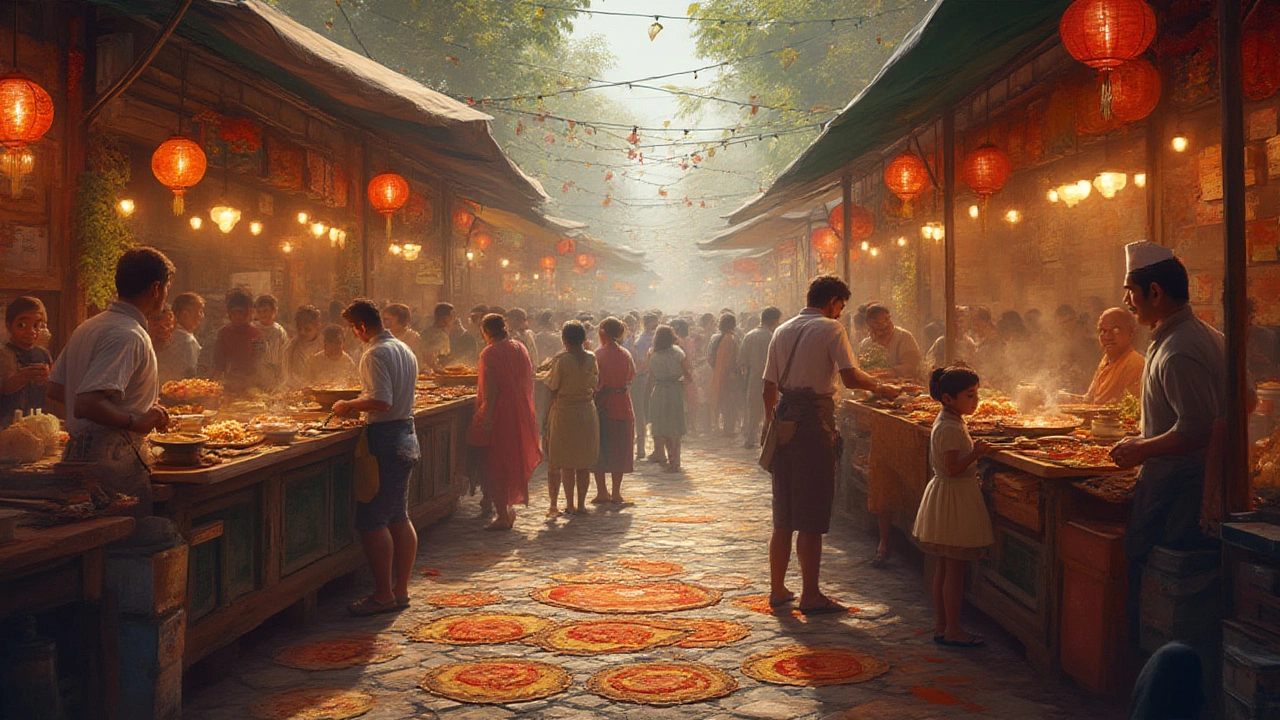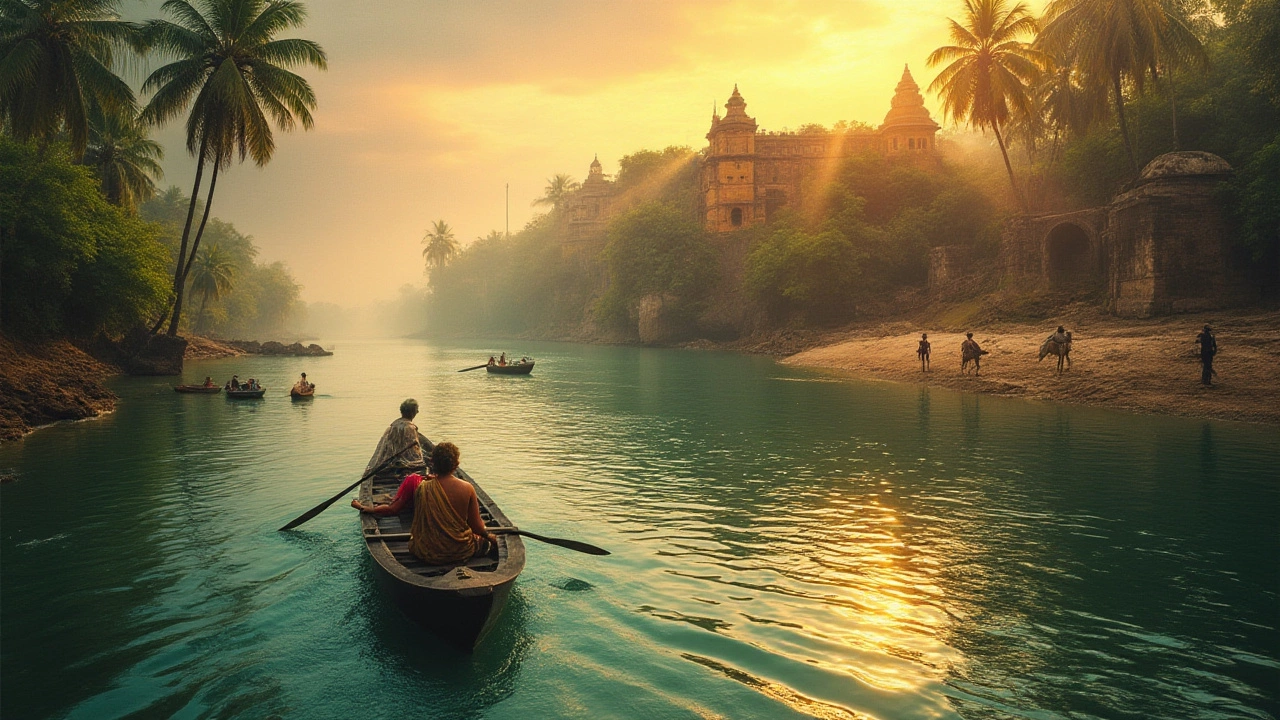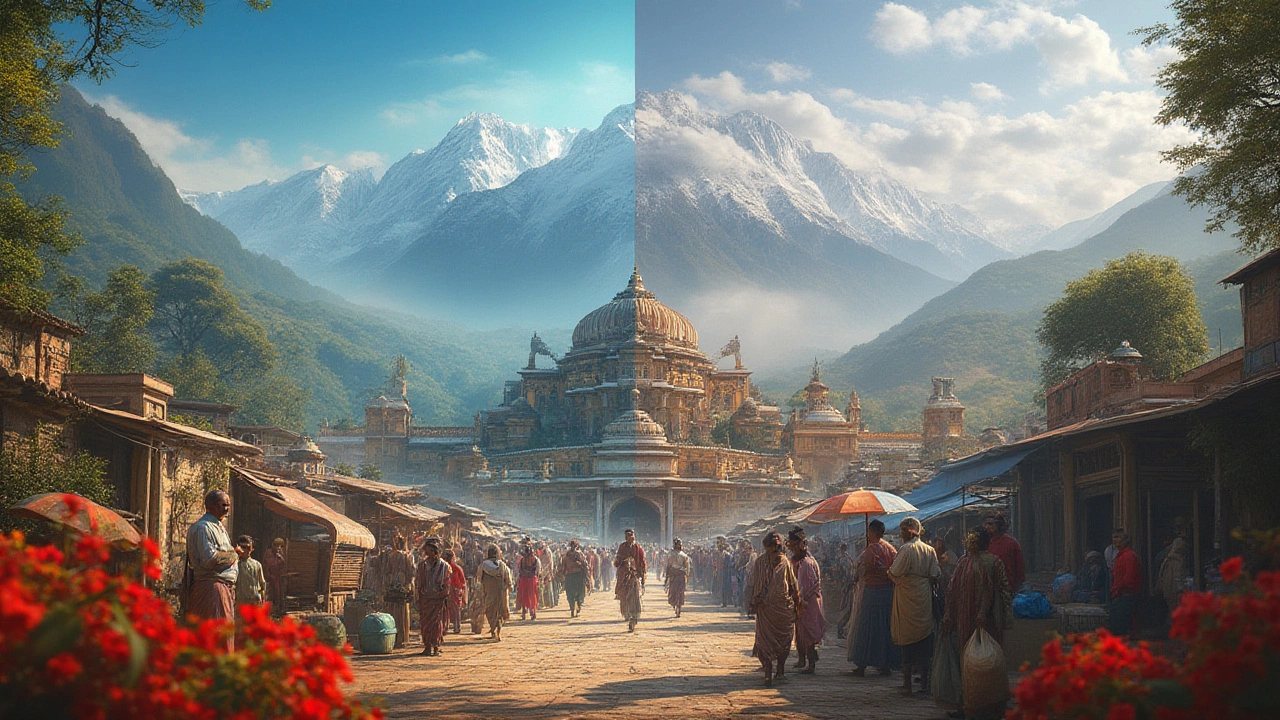Picture this: you're standing on a breezy hilltop, gazing at rolling tea estates in Munnar. Or maybe you’re watching the golden sun bleed behind sand dunes in Rajasthan. Which is more beautiful—South India or North India? It’s a question travelers toss around all the time, and the answer isn’t as simple as picking hills over deserts or temples over palaces. What makes a place beautiful depends on what you crave—green escapes, ancient stories, flavors that make your eyes water, or people that make you smile. I’ve wandered both ends of India, and trust me, there's no “right” pick, but there are unforgettable surprises on each side.
Landscapes That Take Your Breath Away
There’s a wild contrast when you look at South and North India on a map, but you feel it way more when you’re actually there. Begin in the north: Kashmir is called “paradise on Earth” for a reason. Its snowy mountains, alpine lakes, and sprawling meadows look like something straight out of a postcard. Shimla and Manali offer pine forests with a whiff of adventure—ski slopes, hiking trails, even apple orchards where you can bite straight from the branch. Rajasthan flips the story; beauty here comes from the surreal—pink and blue cities, golden sand dunes, forts rising out of the desert haze. The Taj Mahal often gets the spotlight, and trust me, seeing its marble glow at sunrise is a life-changing kind of strange magic.
Now, swing down south. Kerala’s houseboats float quietly along the backwaters, framed by palm trees and flocks of cormorants. In Tamil Nadu, the Western and Eastern Ghats hide hill stations like Kodaikanal—misty woods, waterfalls, and lakes that don’t need any Instagram filter. Karnataka brings you the dramatic Jog Falls and the coastal slice of Gokarna. And then there’s Goa, hugging the Arabian Sea, famous for beaches that range from party central to empty stretches where the only sound is the surf. South India trades in the color green, thick forests, and a kind of humidity that makes flowers bloom everywhere. Hill stations like Ooty and Munnar are havens for nature nerds, with eucalyptus scents and tea plantations rolling down the hills. South India packs a serious punch if you love lush landscapes.
Here’s something that might surprise you—according to data from the Ministry of Tourism, Himachal Pradesh (North) and Kerala (South) are among the top five Indian states pulling in travelers annually, showing that both ends of the country win hearts in their own way.
| Region | Popular Destinations | Top Attraction | Best time to visit |
|---|---|---|---|
| North India | Agra, Jaipur, Shimla, Leh | Taj Mahal | October - March |
| South India | Kerala, Ooty, Hampi, Goa | Kerala Backwaters | November - February |
Culture: The Real Heartbeat
If landscapes are the frame, culture is the real picture. North India wears its history on its sleeve: you’ll find Islamic, Mughal, Rajput, and Sikh influences in its monuments and festivals. Try walking through Old Delhi with its web of lanes—Jama Masjid’s call to prayer drifting over the spice markets. You’ll see Holi in Mathura, bright powder flying, people losing themselves in the joy of color. Rajasthan keeps its folk music alive, with camel festivals and puppet shows on every corner. Trick your mind with Varanasi’s ghats at sunrise, the oldest city on earth where spirituality hangs thick in the air. And then there are the small rituals—chai shared in a busy bazaar, kite festivals crowding the sky in Gujarat, or the Sikh langars, free meals served to thousands every day.
Down south, culture feels quieter but deeply rooted. Tamil Nadu boasts temples that are living centers of art—look at Madurai’s Meenakshi Temple, covered in thousands of color-soaked sculptures. Kerala is all about ancient traditions—Kathakali dance, Ayurveda healing, and Onam, where the entire state erupts in boat races, elaborate floral designs, and feasts called Sadya. Karnataka mixes modern vibes in Bangalore with the royal heritage of Mysore. Here, you see a slower pace—villages with age-old rituals, Carnatic music in the air, devotion that feels almost private yet inviting. South Indian movies and dance hit differently—they’re epic, dramatic, but always come with a pulsing passion.
Tip: If you want to really dig into culture, time your visit with a festival. Diwali in North India lights up homes, while Pongal in Tamil Nadu or the snake boat races in Kerala turn entire states into a celebration.

Food: Spices, Flavors, and Shock to Your Senses
Let’s be honest, “beautiful” isn’t always something you see—it’s something you taste. North Indian food is about richness. Think tandoori chicken, creamy dal makhani, stuffed parathas, and spicy kebabs. The food here is heavy, and there's always a riot of flavor—ginger, garlic, yogurt, and ghee in almost every bite. Saffron and dry fruits pop up everywhere, especially if you’re in Kashmir or Rajasthan. If you like your food to feel decadent, you’ll love North India. The chaats of Delhi, the biryanis of Lucknow, the street food chaos at Chandni Chowk—you will never leave hungry.
But then you taste South India and realize you’ve been missing out on a whole different universe. Here, breakfast is a king’s meal—idli, dosa, vada, sambar, coconut chutney. Fish curry in Kerala or fiery Chettinad chicken in Tamil Nadu will make you sweat (in a good way). Rice is central, not wheat. Banana leaves replace plates, and filter coffee wakes you up faster than any alarm clock. Kerala and Andhra Pradesh are for spice lovers: curries bursting with pepper and chili. The coastal states lean on coconut, so you get creamy gravies and seafood that tastes of the ocean.
If you’re the kind who likes to try everything, you’ll find food tours in both North and South India that will blow your mind. Pro tip: Don’t leave Mumbai (which straddles North and South influences) without trying vada pav, the spiciest burger you’ll ever taste.
People, Vibe, and Hidden Charms
If you’ve ever chatted with a stranger at a chai stall or got lost and found help in a tiny village, you know that people shape your travel stories. North Indians are famous for their boisterous hospitality. They love big weddings, noisy celebrations, and go out of their way to make you feel like family. Bargaining at a market in Jaipur or sharing a meal in Amritsar, you’ll see that warmth up close. Uttar Pradesh and Rajasthan—though often dealing with crowds and chaos—are home to folks who look after guests with pride, thanks to the age-old philosophy: 'Atithi Devo Bhava'—the guest is god.
Down south, people are more reserved at first but equally welcoming once you break the ice. In Kerala, even a shopkeeper addresses you as “Chetta” or “Chechi”—meaning brother or sister. The pace here is laid-back, which is infectious for any traveler looking to slow down. Safety scores are notably high in southern states like Kerala and Tamil Nadu, and you’ll find women travelers often mention how comfortable they feel. South India often surprises visitors with its literacy levels—Kerala has the highest in the country—and its commitment to eco initiatives. You might stumble across a plastic-free zone in Coorg or a local farm-to-table café in Bangalore.
Hidden gems? The Himalayas in the north hide Buddhist monasteries few ever see. In the south, you might find a 1,000-year-old temple sleeping behind a busy street or stumble onto a silent Ayurvedic retreat right on the beach.

Which Region Wins—And Should You Even Choose?
Trying to pit South India against North India is like choosing between sunrise and sunset—they’re different stories, but both are unforgettable. If you want drama—big forts, snowy mountains, a cacophony of history and color—book your ticket north. If you yearn for calm, green views, temple bells, and a gentle vibe that seeps into your bones, head south. But if you honestly want the whole picture—culture, food, nature, people—your best bet is to sample both. Hop a train; taste the changes; stay long enough to soak up not just the sights but the mood. You’ll soon realize that the real beauty of India isn’t about north or south, but how every corner tells a different story, and they all blend together into something breathtaking you just can’t find anywhere else.
